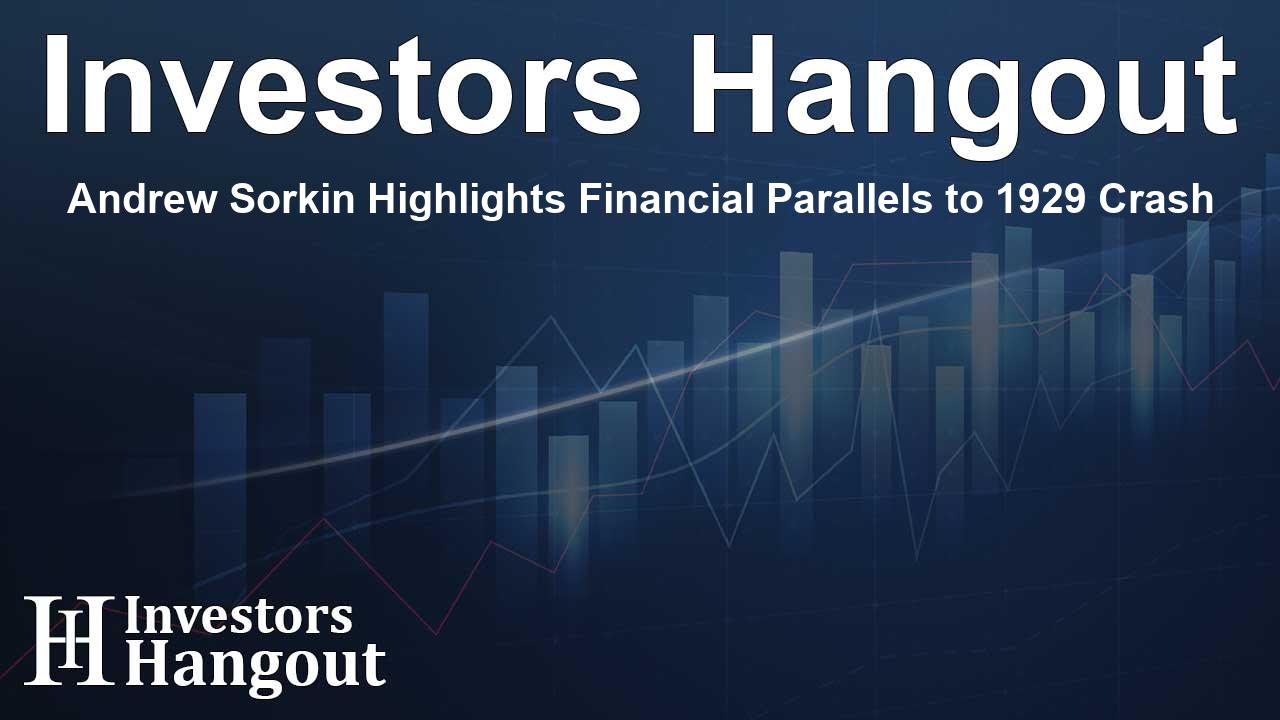Andrew Sorkin Highlights Financial Parallels to 1929 Crash

Exploring Financial Trends: Lessons from the Past
Author and journalist Andrew Ross Sorkin highlights concerning similarities between the current financial landscape and the conditions leading to the catastrophic market crash of 1929. Through his recent discussions, he draws stark parallels to the significant events that unfolded during one of history's most challenging economic periods.
Connections Between 1929 and Today's Market
Insights from Sorkin's New Book
In a recent episode of The Real Eisman Playbook podcast, Sorkin elaborated on his latest book, “1929,” which delves into the monumental factors that contributed to the stock market's historic downfall. He expressed his astonishment at the market dynamics today, stating they reflect a reality reminiscent of 1929.
Speculative Excesses and their Implications
Sorkin pointed out specific speculative behaviors that mirror those prevalent in the late 1920s, which contributed to economic turbulence. Trends such as increased leverage and financial innovation, similar to the emergence of private credit, signal potential risks reminiscent of the past.
The Rise of Private Credit
Today, private credit has surged in popularity, reflecting the trends of the 1920s when various financial instruments began to take root. This surge in private credit is concerning, echoing a period when market innovations, such as credit agencies, emerged due to leveraging and margin lending.
The Trend Toward Tokenization
In his analysis, Sorkin also discussed the trend of tokenizing private companies, aiming to democratize access to investments in these entities. He correlated this move to the introduction of investment trusts in the 1920s, which served as the early version of mutual funds, providing new pathways for investors.
Risks in the Private Credit Markets
According to hedge fund manager Jim Chanos, recent disintegration in the private credit markets signals a shifting tide. The collapse of companies, such as U.S. auto parts supplier First Brands, has raised red flags about the sustainability of private debt investments.
Emerging Challenges for Private Equity
Sorkin predicts that the unwinding impact on private credit could reveal more vulnerabilities in the future. He notes that these issues stem from existing layers of financial mechanisms that separate lenders from borrowers, creating a more complex web of financial interactions.
Understanding Current Vulnerabilities
In his observations, Bill Hebel of 22V Research argues that private equity firms face significant exposure to weaker consumer credit sectors than banks. This situation poses a risk, amidst fluctuating economic policies, trade tariffs, and shifting government regulations that might arise.
What Lies Ahead?
As the financial landscape evolves, experts warn that the principles that led to the 1929 crash could resurface. The combination of debt leverage and fear of missing out (FOMO) often culminate in explosive growth patterns that can destabilize markets.
Frequently Asked Questions
What did Andrew Sorkin discuss in his recent podcast?
Sorkin discussed the troubling similarities between today’s financial conditions and those leading up to the 1929 market crash.
How does Sorkin relate today’s market to the past?
He parallels current trends, such as private credit and speculative excesses, with the economic landscape of 1929.
What are the implications of private credit rising?
The rise of private credit reflects increased financial leverage, similar to trends during the 1920s, potentially leading to economic instability.
Why are tokenized investments relevant today?
Tokenization aims to offer broader access to investments in private companies, reminiscent of early investment trust structures.
What should be monitored in today’s market?
Investors need to be vigilant about leverage and market sentiment, as these factors could herald impending market corrections.
About The Author
Contact Hannah Lewis privately here. Or send an email with ATTN: Hannah Lewis as the subject to contact@investorshangout.com.
About Investors Hangout
Investors Hangout is a leading online stock forum for financial discussion and learning, offering a wide range of free tools and resources. It draws in traders of all levels, who exchange market knowledge, investigate trading tactics, and keep an eye on industry developments in real time. Featuring financial articles, stock message boards, quotes, charts, company profiles, and live news updates. Through cooperative learning and a wealth of informational resources, it helps users from novices creating their first portfolios to experts honing their techniques. Join Investors Hangout today: https://investorshangout.com/
The content of this article is based on factual, publicly available information and does not represent legal, financial, or investment advice. Investors Hangout does not offer financial advice, and the author is not a licensed financial advisor. Consult a qualified advisor before making any financial or investment decisions based on this article. This article should not be considered advice to purchase, sell, or hold any securities or other investments. If any of the material provided here is inaccurate, please contact us for corrections.
